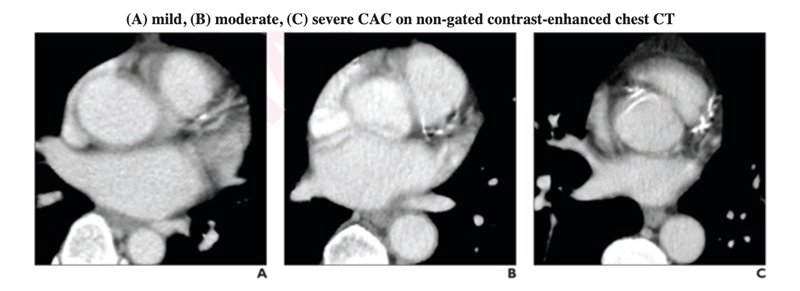Visual Ordinal CAC Scoring on Chest CT Could ID Patients for Preventive Treatment
 Performing routine visual ordinal coronary artery calcium (CAC) assessment on all chest CT examinations may identify more patients who would benefit from preventive therapies.
Performing routine visual ordinal coronary artery calcium (CAC) assessment on all chest CT examinations may identify more patients who would benefit from preventive therapies.
The study, published in the American Journal of Roentgenology (AJR) included 260 patients (mean age, 60; 158 male, 102 female) who underwent both non-gated chest CT (contrast-enhanced in 116 patients; non-contrast in 144 patients) and cardiac calcium-score CT within a 12-month interval. A cardiothoracic radiologist visually assessed CAC on chest CT using an ordinal scale: absent, mild, moderate, or severe.
“Visual ordinal CAC assessment on both contrast-enhanced and non-contrast chest CT has high diagnostic performance, prognostic utility, and interobserver agreement,” confirmed corresponding author Kate Hanneman, MD, MPH, from Toronto General Hospital, University Health Network in Ontario.
Ultimately, visual ordinal assessment of coronary artery calcium on both contrast-enhanced and non-contrast non-gated chest CT has high sensitivity (83% vs 90%, p=.20) and specificity (100% vs 100%, p=.99), prognostic utility (HR 4.5, p=.02 and HR 3.4, p=.003, respectively), and excellent interobserver agreement (κ=0.89 and κ=0.95, respectively).
“Routine reporting of CAC on all chest CT examinations regardless of clinical indication and contrast material administration could identify a large number of patients with previously unknown CAC who might benefit from preventive treatment,” Dr. Hanneman added.
